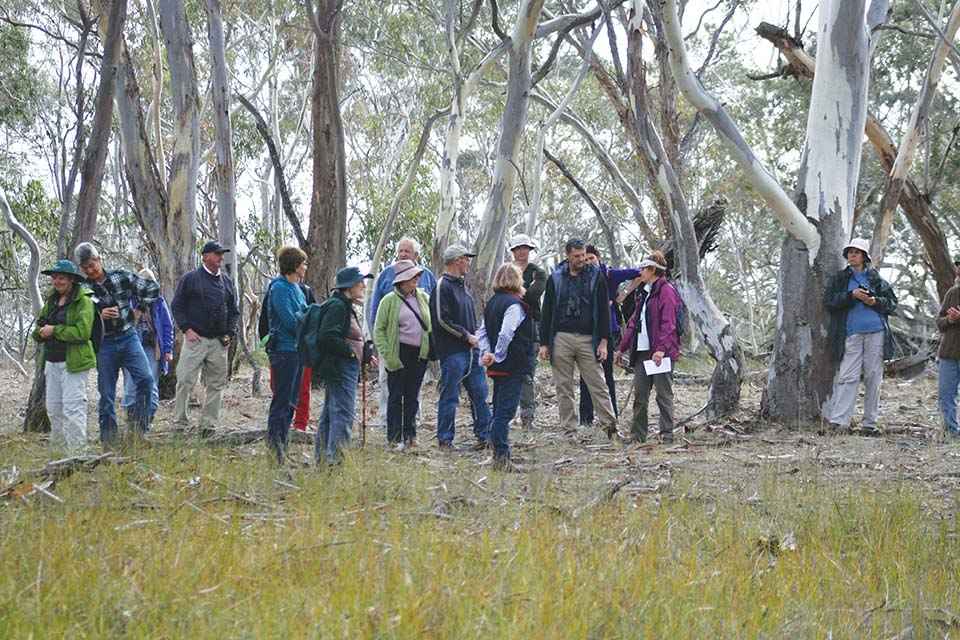Victorian Landcare Magazine - Spring 2016, Issue 67

The Kowree Farm Tree Group (KFTG) is located in the south west of the Wimmera. The region is home, historically at least, to numerous wetlands and provides habitat for rare and endangered birds such as the Red-tailed Black Cockatoo, Brolga, Malleefowl, Australian Bustard and the elusive Bush Stone-curlew. The paddocks are peppered with magnificent ancient red gums.
The region’s majestic old trees have come under increasing pressure as farmers adapt to our changing climate by moving from grazing to cropping. Less than three per cent of the region’s endangered buloke woodland remains intact and much of the remaining woodland is degraded, exists in small blocks, or as scattered trees.
Many of the 48 species of rare and endangered birds and 11 species of threatened mammals (the Swamp Antechinus was added to the list in May 2016) are dependent upon our woodlands. It was concerns over the health of the ancient red gums and alarm at the impacts of land clearing that encouraged the founding members of the KFTG to meet for the first time in 1986.
In the early days, the group concentrated on general farm planting for shade, shelter, erosion control along waterways, and direct seeding trials. In 1999 a project to link the Little Desert to the Glenelg River began. The Kowree Biolink Project took three years to complete and involved the cooperation of more than 100 landowners in a shire of just 4000 people. This project earned the KFTG the Bushcare Nature Conservation Award at the 2003 Victorian Landcare Awards. The project continues to be a great source of satisfaction for the group as the trees are now reaching maturity and are well integrated into the landscape.
Thirty years on, KFTG remains committed to regeneration projects and to the protection of native flora and fauna species.
According to founding member and President, Andrew Bradey, things have changed over time.
“We moved quickly from farm tree plantings to conservation plantings. This acted as a vehicle to get government money on to private land. In the past ten years, this role has diminished as the CMAs work more directly with landholders to carry out conservation work. KFTG is now more active in supporting other conservation organisations to achieve their objectives in our area,” Andrew said.
Over recent years the KFTG has formed many successful partnerships to run projects and coordinate activities. The group has worked with the Bank Australia Conservation Landbank, Trust for Nature, The University of Melbourne, Landcare Australia Limited, and Habitat 141. Many
of these partnerships have also involved wide-scale community participation.
Andrew Bradey believes the group’s success can be attributed to a number of people involved in getting the group started who are still active and still driving things today.
“We are in a ‘head scratching phase’ right now – working out what to focus on next. We need to continue to sell the merits of the biolink to the community and all branches of government.
“Involving local schools and the participation of our local kids is an ongoing priority. Two of our founding members were teachers at Edenhope High School, and farmers, so the group has had good relations with schools from the beginning,” Andrew said.
Various local groups have come and gone over the last 30 years but KFTG has endured.
Founding member Sue Close attributes the group’s success to the dedication of those involved and the ability to work cooperatively, pragmatically and adapt over time.
“It’s multi-generational, it keeps evolving and there will be no ‘job done’ moment,” Sue said.